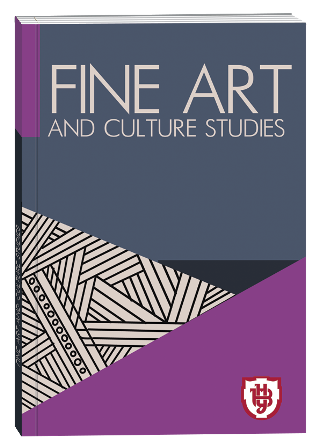ARTISTIC TRANSLATION IN MUSIC AS A FACTOR OF ACADEMICIZATION OF FOLK INSTRUMENTS
DOI:
https://doi.org/10.32782/facs-2022-1-1Keywords:
literary translation, folk instruments, academic music, genre of transcriptionAbstract
The article considers the phenomenon of artistic translation in the art of music as an integral part of the repertoire of performers on folk instruments. It is noted that the process of improvement and modernization of such instruments as accordion, bandura, domra, significantly intensified translation activities, gave the opportunity to perform works of academic music of various styles and genres. The purpose of the article is to substantiate the laws of artistic translation in the art of music and to understand its role in the process of further academization of folk instruments. The research methodology is based on the application of an integrated systems approach, which led to the use of the following research methods: historical and genetic, which reveals the genesis of phenomena; comparative-historical, which allows us to trace the phenomenon of artistic translation in the art of music through analogies with linguistics and literary studies, organology, which reveals the specifics of folk instruments. The scientific novelty of the article is to understand the crucial importance of musical translation in the process of academization of folk instruments. Conclusions. Improving the technical and performing capabilities of folk instruments and performing virtuosity have led to the expansion and enrichment of its repertoire, joining the world classical music culture. Artistic translation in its genre diversity took an extremely important place in this process. This allowed the performers to master the stylistic and genre features of the music of the world academic tradition and to represent the new academic performing era, and the instruments themselves to move from the category of folk to professional-academic, solo-virtuoso.
References
Бойко Ю. Куда идти народным инструментам? Труды Санкт -Петербургского государственного института культуры, 2015. С. 45-69.
Варламов Д. Становление академической традиции в русском народно-инструментальном искусстве XIX столетия. URL: https://unotices.com/books-u/184702/1 (25.10.2021).
Гончаренко С. Транскрипции как область творчества Новосибирских композиторов. Вестник музыкальной науки, 2013. С. 47-55.
Давыдов Н. Методика переложений инструментальных произведений для баяна. Москва: Музыка, 1989. 176 с.
Жарков О. Художній переклад у музиці: проблеми і рішення: автореф. дис. … канд. мистецтвознав. Київ, 1994. 18 с.
Из воспоминаний В. В. Андрєєва. URL: http://www.gmstrings.ru/articles/russkie-narodnye-instrumenty/k-100-letiyu-so-dnya-rozhdeniya-v-v-andreeva/ (28.11.2021).
Имханицкий М. История исполнительства на русских народных инструментах. Москва, 2018, 640 с.
Липс Ф. Об искусстве баянной транскрипции. Москва: Музыка, 2007. 136 с.
Плющенко М. Темброво-фактурна специфіка транскрипцій за участю баяна чи акордеона композиторів Харкова кінця ХХ –початку ХХІ століття: дис. … канд. мистецтвознав. Харків, 2021. 290 с.
Смирнова Т. Транскрипционное творчество в современном домровом искусстве: дис. … канд. искусств. Воронеж, 2016. 168 с.
Черноіваненко А. Академічне музично-інструментальне мистецтво як предмет музикознавчої системології. Одеса: Видавничий Дім «Гельветика, 2021. 704 с.
Швейцер А. Иоганн Себастьян Бах / пер. с нем. Я.Друскин. Москва: Музыка, 1965. 728 с.
Швейцер А.Д. Теория перевода: статус, проблемы, аспекты. Москва: Наука, 1988. 215 с.
Яницький Т. Теоретичні засади художнього перекладення музичних творів для бандури: автореф. дис. … канд. мистецтвознав. Київ, 2020. 20 с.







